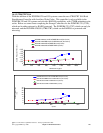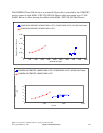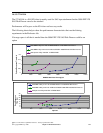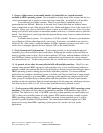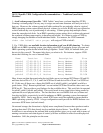
14.5 iV6R1M0 -- VIOS and IVM Considerations
Beginning in iV6R1M0, IBM i operating system will participate in a new virtualization strategy
by becoming a client of the VIOS product. Customers will view the VIOS product two different
ways:
y On blade products, through the regular configuration tool IVM (which includes an easy to
use interface to VIOS).
y On traditional (non-blade) products, through a combination of HMC and the VIOS command
line.
The blade products have a simpler interface which, on our testing, appear to be sufficient for the
environments involved. On blades, customers are restricted to a single set of 16 logical units
(which IBM i operating system perceives as if they were physical drives). This substantially
reduces the number and value of tuning options. It is possible for blade-based customers to use
the VIOS command line. However, we did not discover the need to do so and do not think most
customers will need to either. The tuning available from IVM proved sufficient and should be
preferred for its ease of use when it is workable.
Customers should strongly consider their disk requirements here and consult with their support
teams before ordering. Customers with more sophisticated disk-based requirements (or, simply,
larger numbers of disks) should choose systems that allow a greater number of LUNs and
thereby enable more substantial tuning options provided from the VIOS command line. No hard
and fast rules are possible here and we again emphasize that one consult with their support team
on what will work for them. However, as a broad rule of thumb, customers with 200 or more
physical drives very likely need something beyond the 16 LUNs provided by the IVM
environment. Customers below 100 physical disks can, in most cases, get by with IVM.
Customers with 50 or fewer very likely will do just fine with IVM.
IBM i 6.1 Performance Capabilities Reference - January/April/October 2008
© Copyright IBM Corp. 2008 Chapter 14 DASD Performance 215






